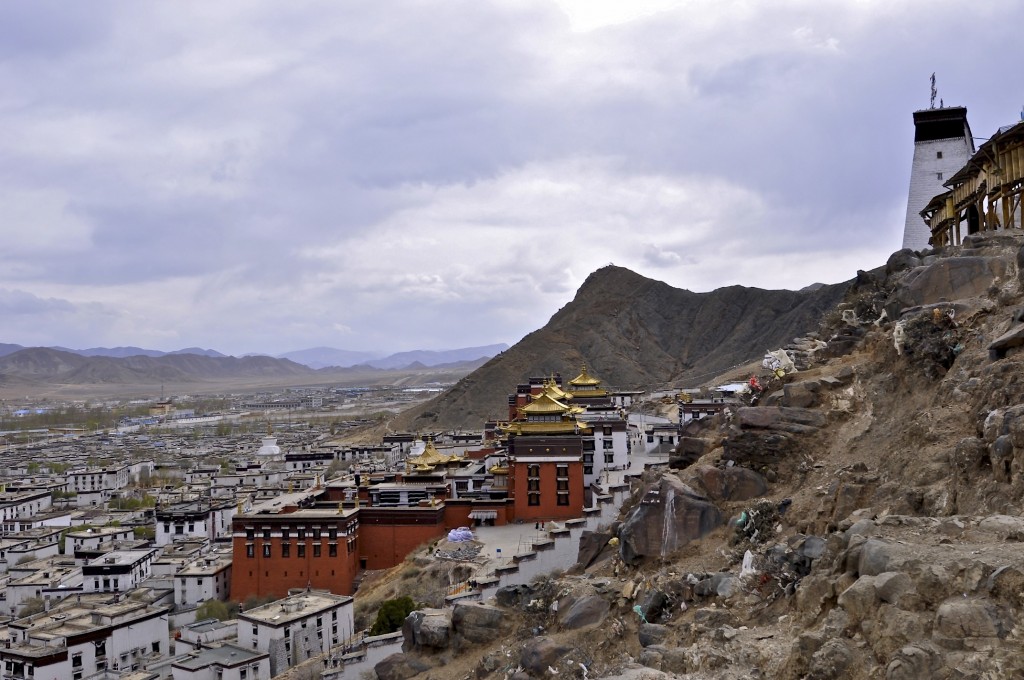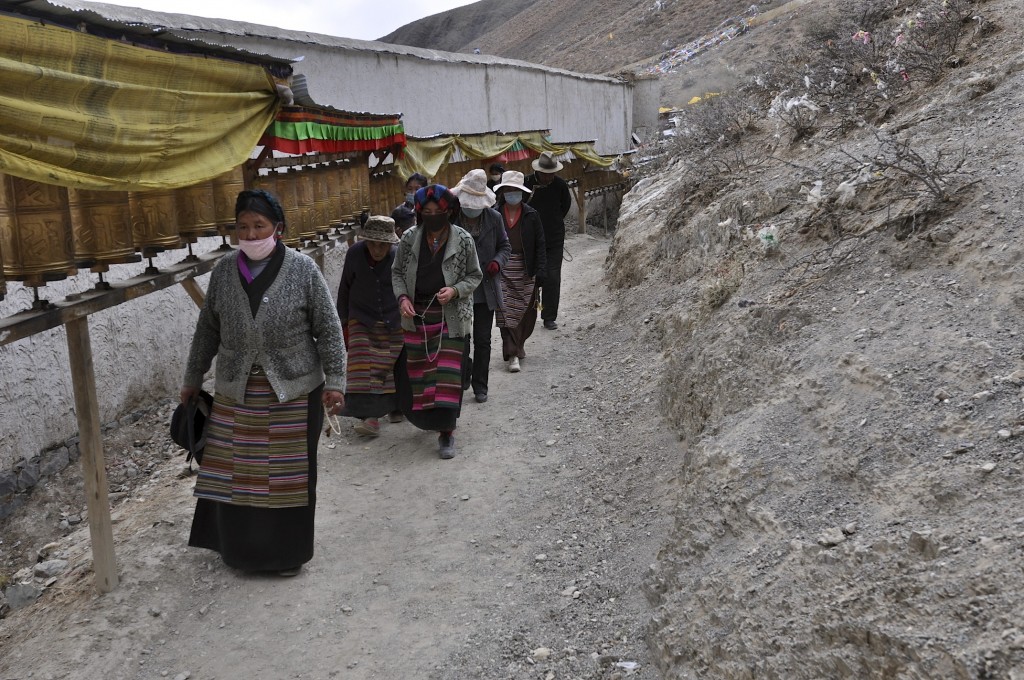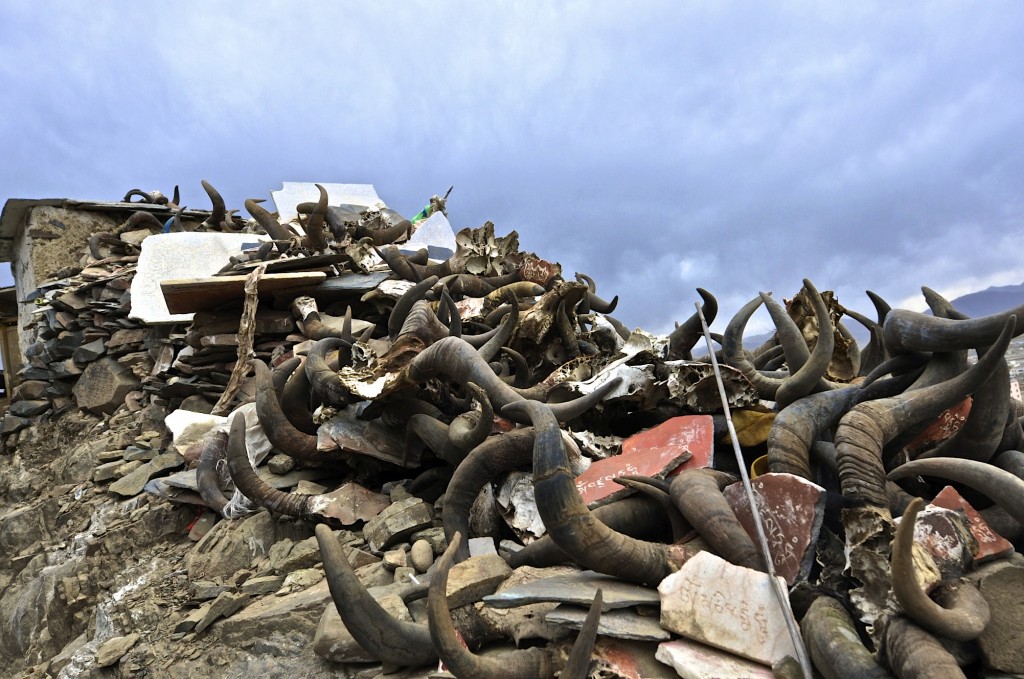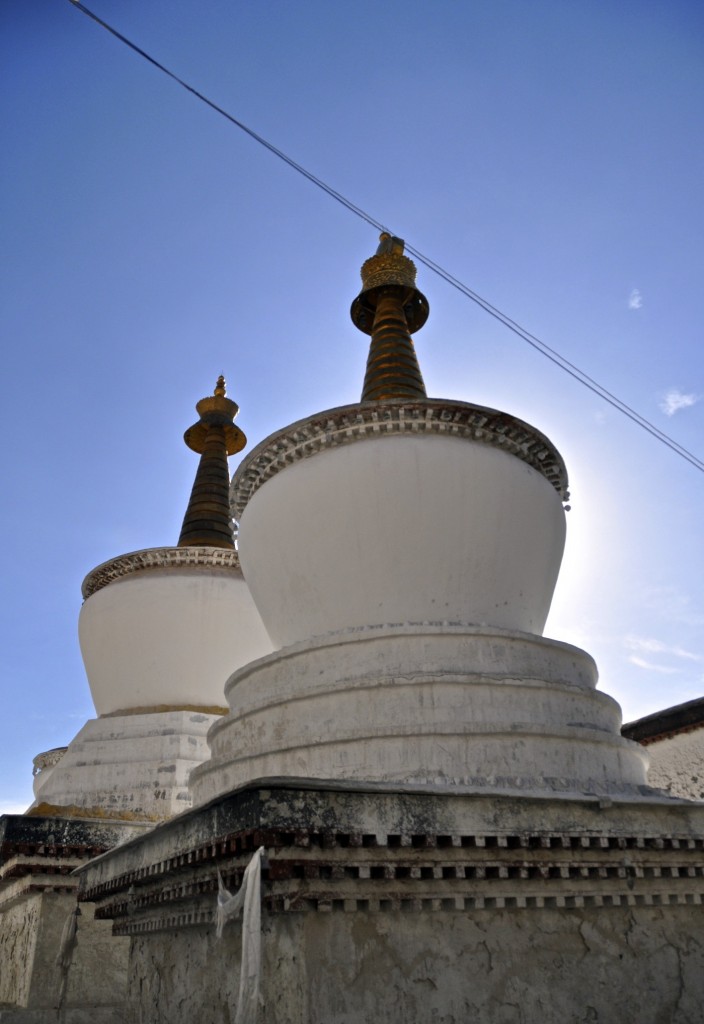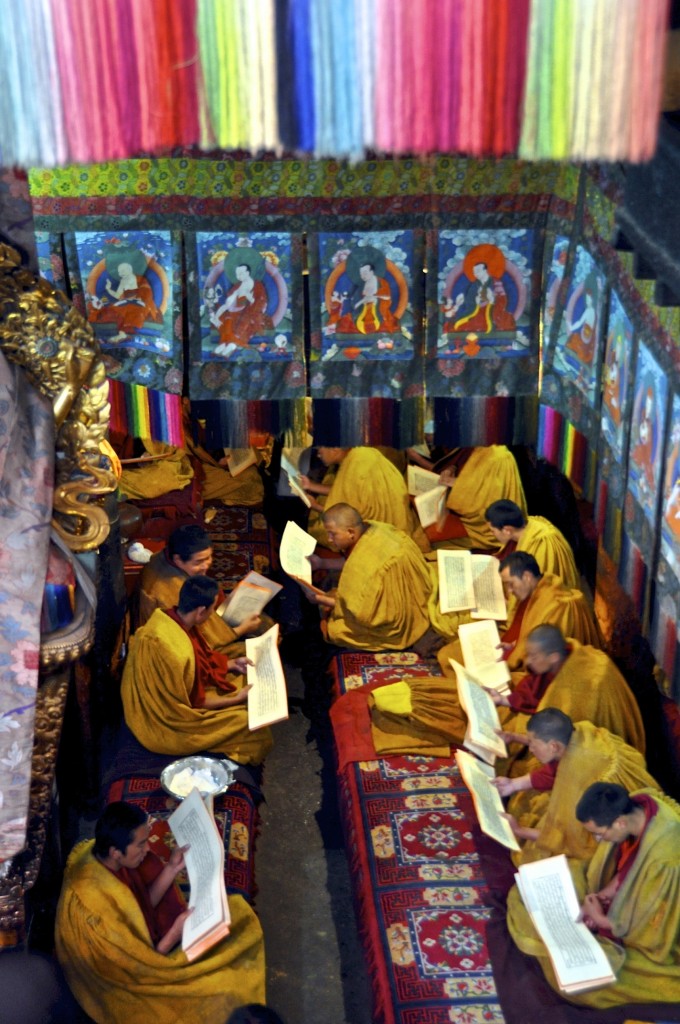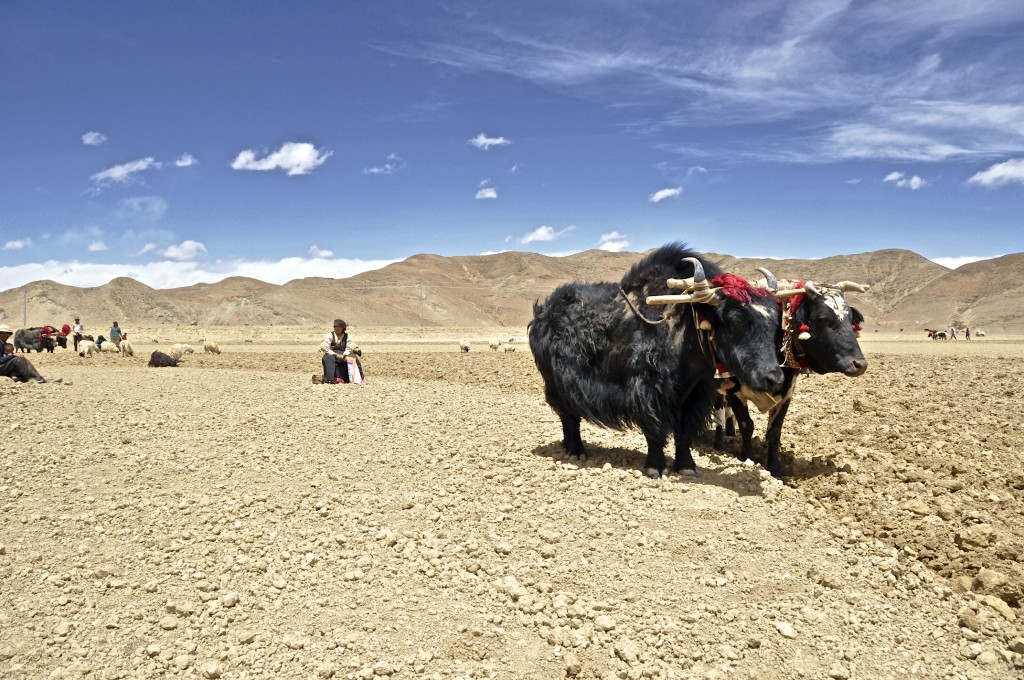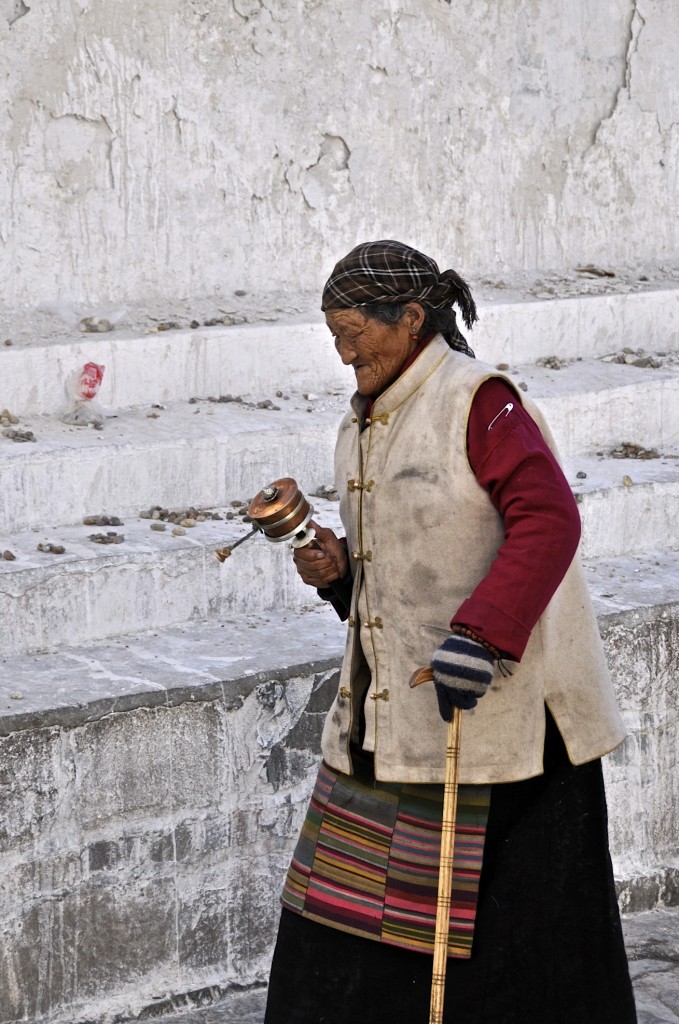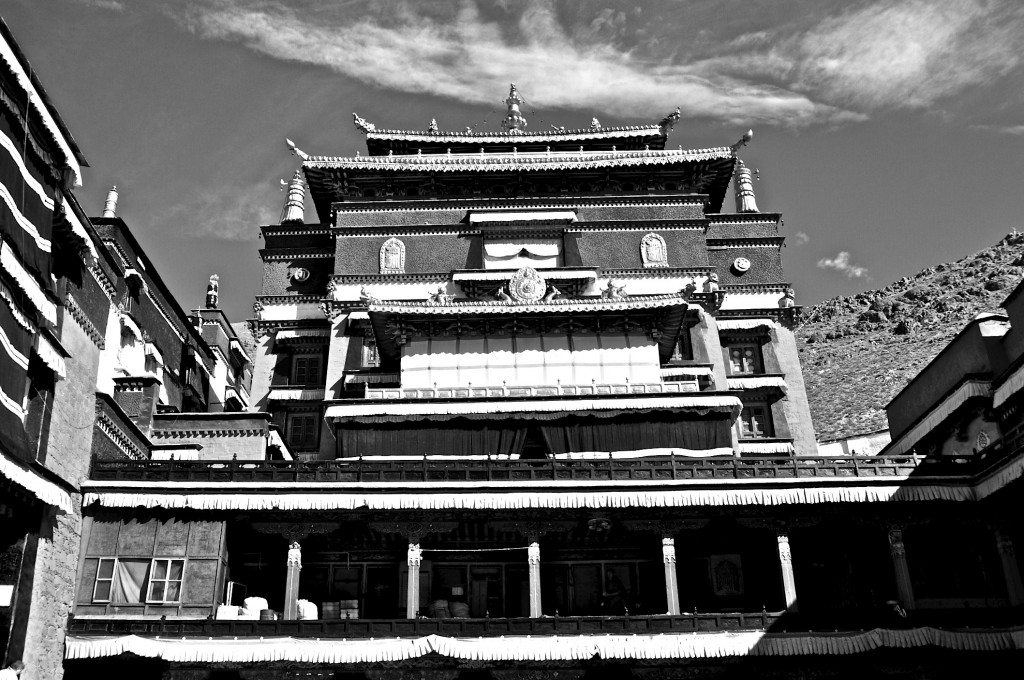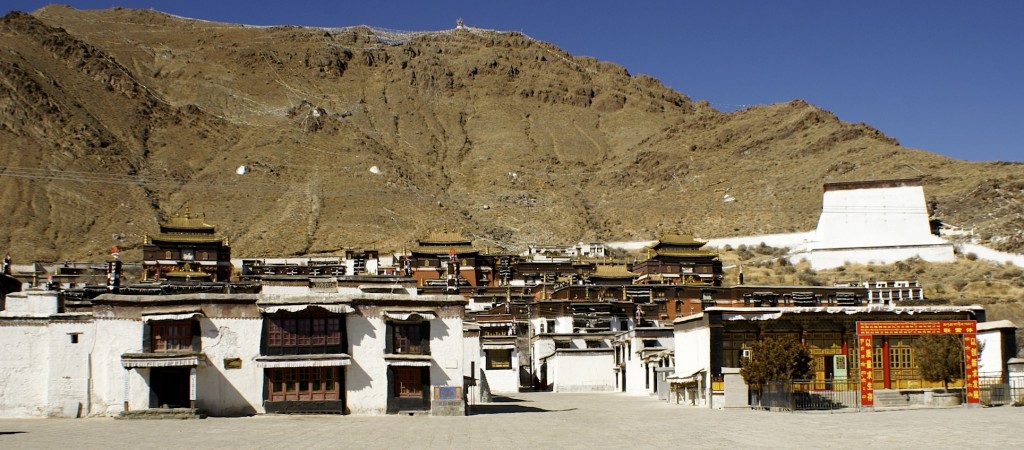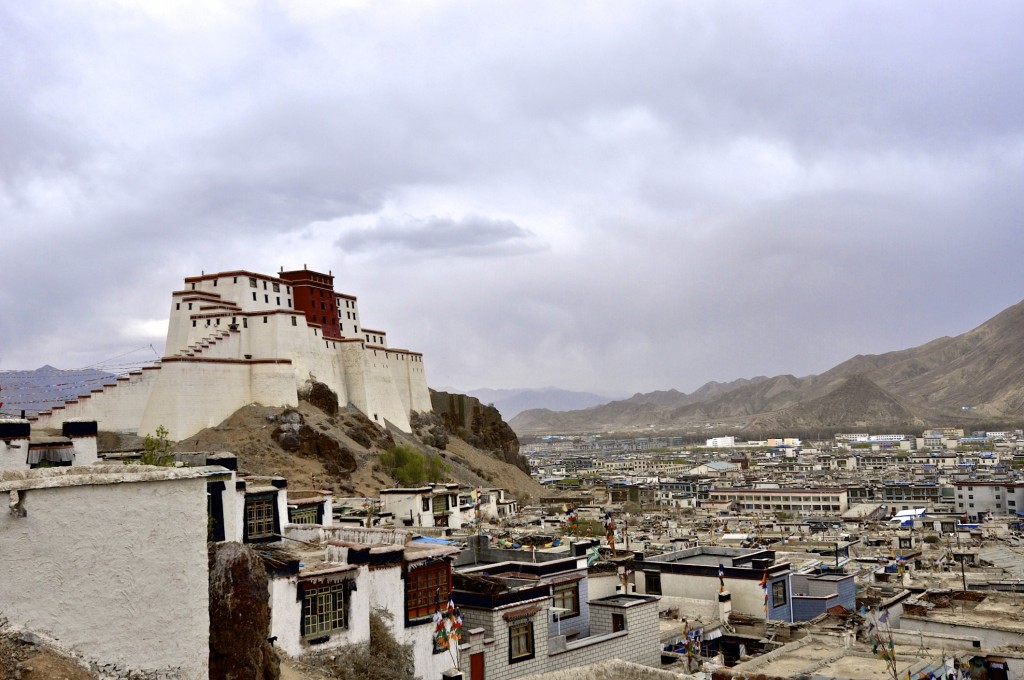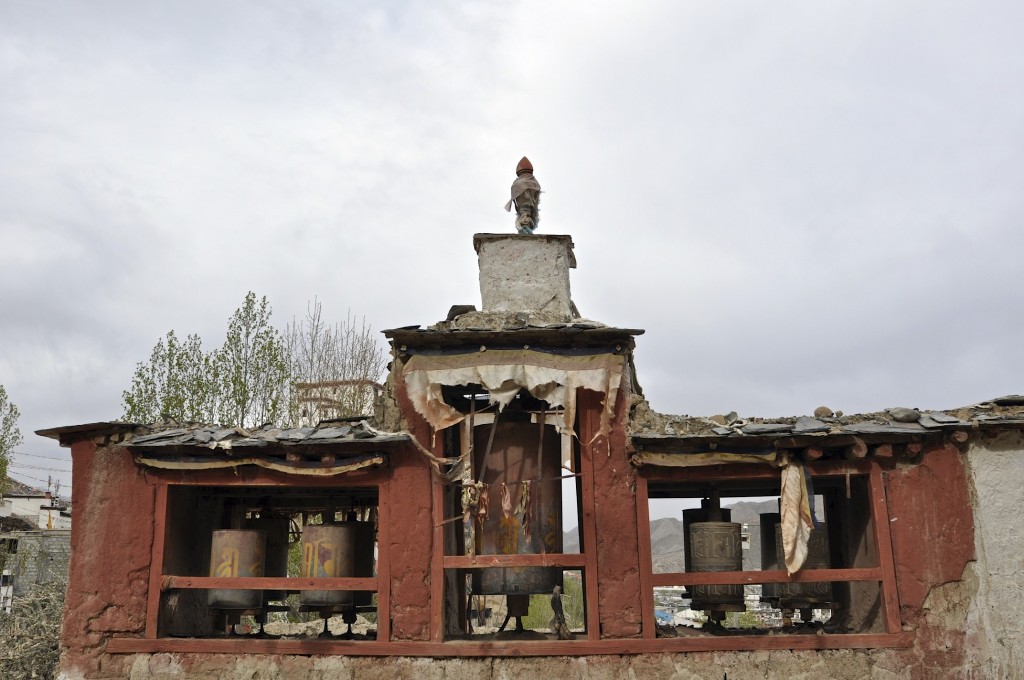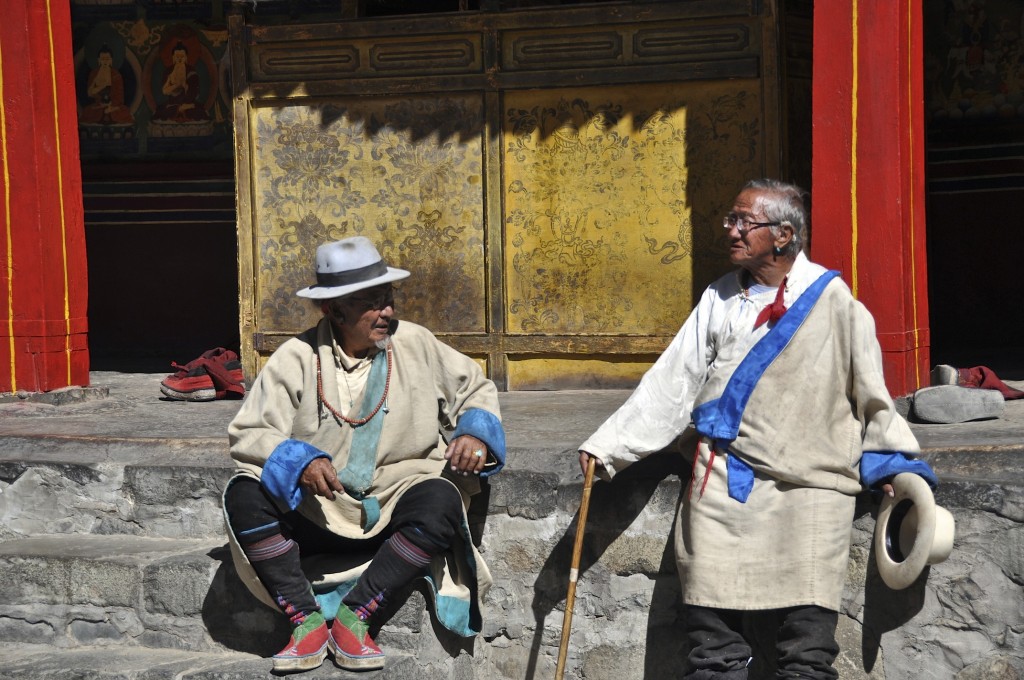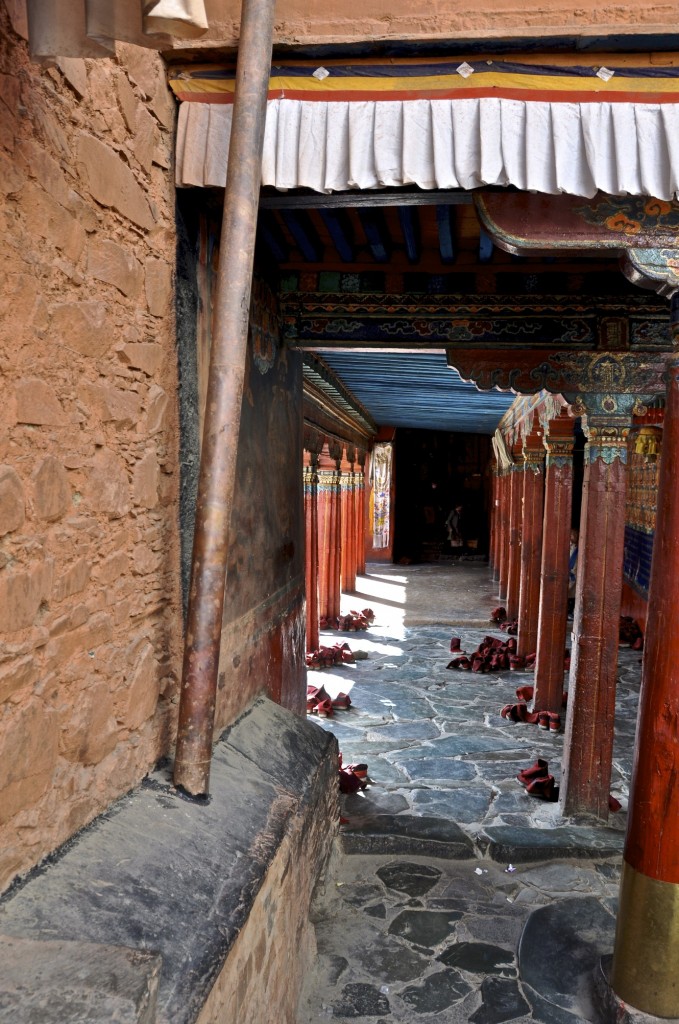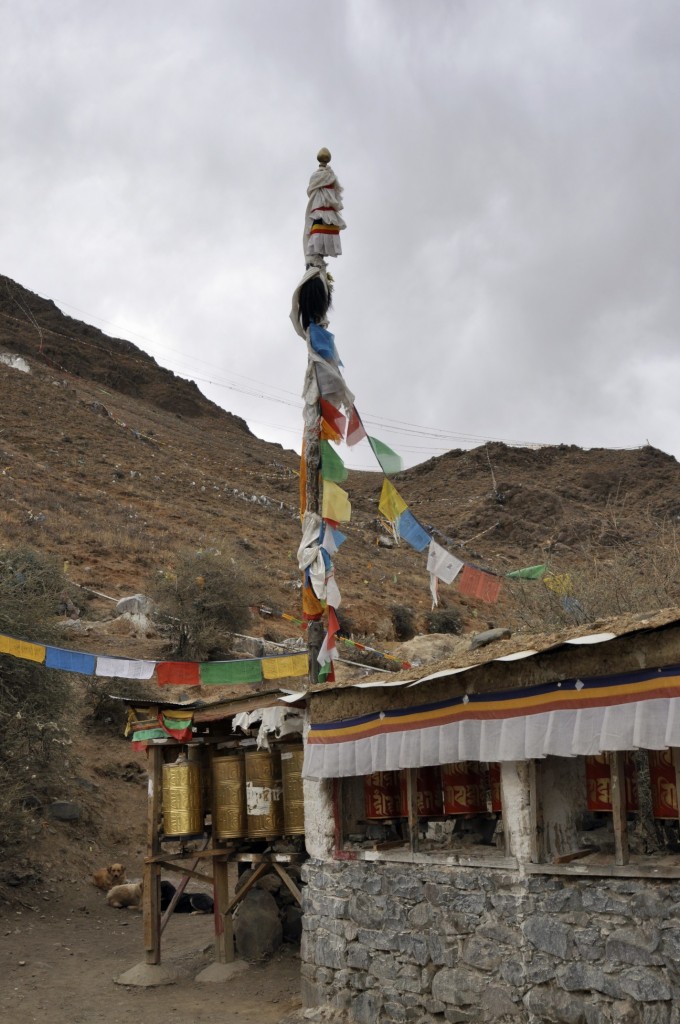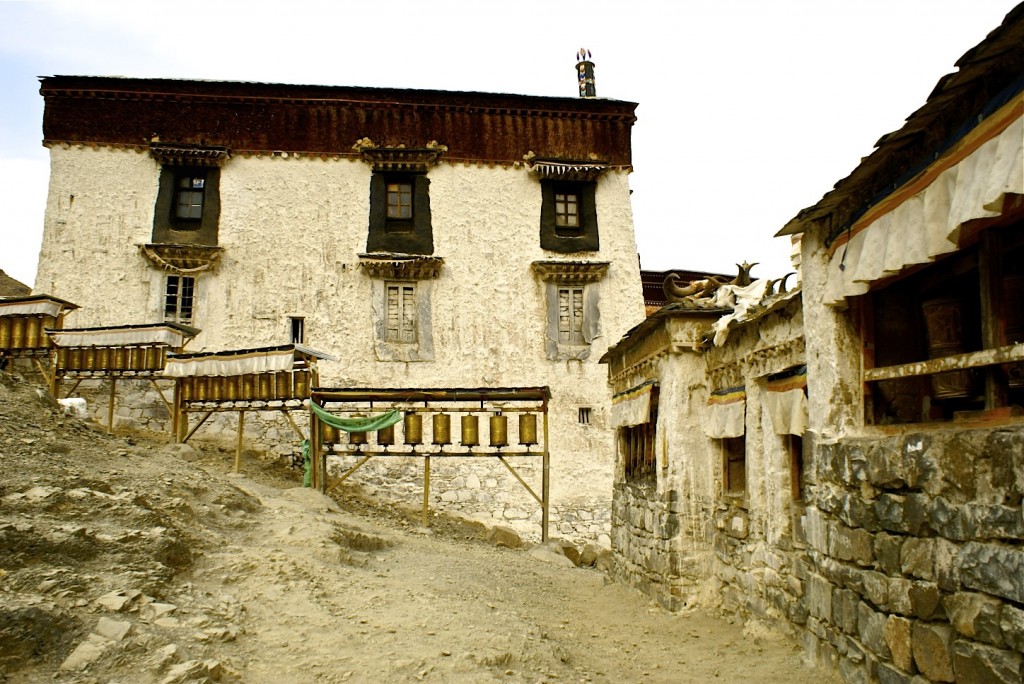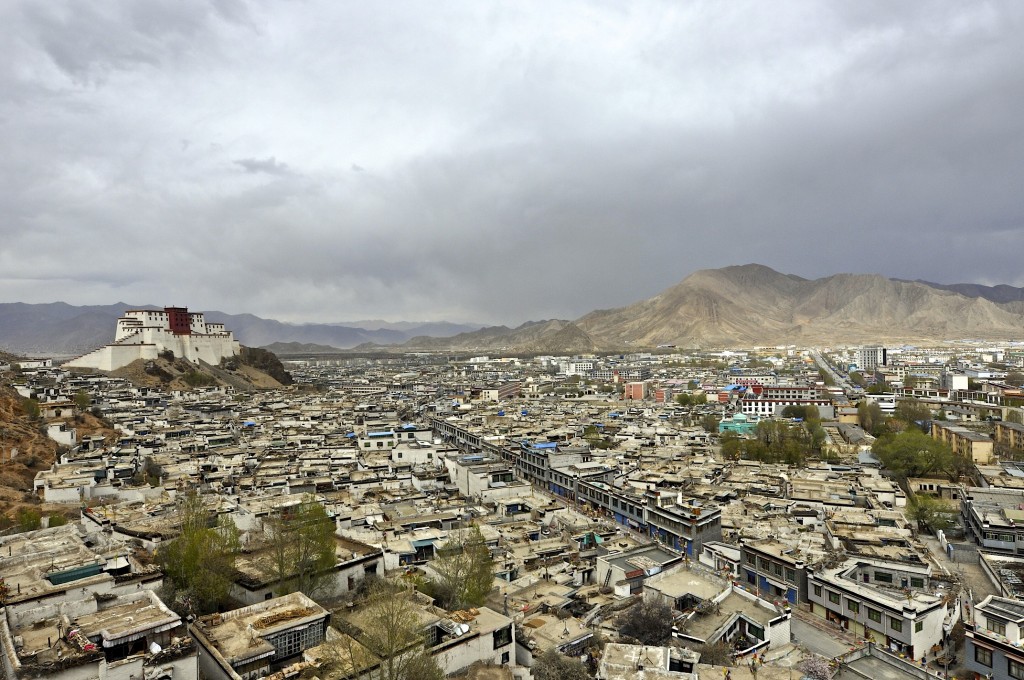
Shigatse གཞིས་ཀ་རྩེ is the second largest city in the Tibet Autonomous Region and is the capital of Shigatse Prefecture in the traditional Tibetan region of Tsang གཙང་. Shigatse sits at an elevation of 3848 meters / 12,625 feet and has a population of nearly 100,000. It has been an important town in Tibetan history for many centuries. In the past 30 years, it has also become a popular stopover for foreigners traveling along the famous Friendship Highway, which links Lhasa with Kathmandu, Nepal.
Shigatse sits along the confluence of the Nyang Chu River and the Yarlung Tsangpo River, known in India and Bangladesh as the Brahmaputra River. The valley where Shigatse is has fertile soil making it one of the best farming areas in all of Tibet. Shigatse has a fairly mild climate for Tibet. Winter temperatures average around 7C/45F during the day time and around -10C/15F at night. Winters tend to be extremely dry with abundant sunshine. Summer temperatures average around 21C/70F during the day and around 10C/50F at night. Summertime brings clouds and moderate rainfall.
Tashi Lhunpo
The main attraction in Shigatse is the massive Tashi Lhunpo Monastery བཀྲ་ཤིས་ལྷུན་པོ་དགོན།. The monastery was founded in 1447 and is the seat of the Panchen Rinpoche པན་ཆེན་རིན་པོ་ཆེ་, who throughout the history of the Gelukpa tradition, has been the second highest incarnation lineage after the Dalai Lama (Gyalwa Rinpoche རྒྱལ་བ་རིན་པོ་ཆེ་). At its peak, the monastery had several thousand monks. Today, it is home to around 600 monks. As one of the most famous and important monasteries in all of Tibet, it sees hundreds of religious pilgrims each day. During Losar (Tibetan New Year), thousands of pilgrims come from all corners of Tibet, to walk the kora around the monastery. Tashi Lhunpo was one of only a handful of monasteries in Tibet to not be completely destroyed by the Cultural Revolution. Entrance into the monastery costs 100 RMB per person.
Samdrup Tse Dzong
One building that did not survive the Cultural Revolution was the old Shigatse Dzong (Samdrup Tse Dzong). The original building started being constructed in the 15th century and was used as a military fort until the first part of the 20th century. It also was used for government purposes and was used as the seat for the kings of the Tsang region. From a distance the old fort looked like a smaller version of the Potala Palace in Lhasa.
In 1961, the Red Guards ordered for the dzong to be taken apart by hand by local Tibetans. In 2005, the government began rebuilding the fort. Construction finished in 2008. Local officials have said for the past few years that the dzong will open to the public, but to date that has not happened.
Transportation and Travel to Shigatse
The train line to Lhasa began operating in July 2006. Shortly after it opened, the government announced plans to extend the railway to Shigatse. Construction began a couple of years ago and it is finish in 2014. The new express road from Lhasa to Shigatse was complete in 2023. reducing your journey to Lhasa with few hours.
Most people arrive in Shigatse in the late afternoon from Lhasa and only stay 1 night. However, if your time allows, I recommend staying 1 full day and 2 nights. That way you can go to Tashi Lhunpo Monastery in the morning along with the pilgrims and stay there for a good portion of the day. After visiting the monastery, I highly recommend walking the pilgrimage circuit around the monastery. Along the backside of the monastery, another trail leads through some villages at the base of the monastery that continues over to the newly rebuilt Shigatse Dzong.
Shigatse Travel Guide
As with all areas of the Tibet Autonomous Region, travel to Shigatse requires that you be part of an organize tour that can only be arrange by a travel agency. Independent travel to Shigatse is not allow. Shigatse is a modern Tibetan town that has plenty of excellent hotels and restaurants to choose from.
I normally stay at the 3 Star Manasarovar Hotel on the far end of Shigatse, though there are many other good options to choose from. The Gang Gyan Shigatse Hotel is located within walking distance of the monastery and offers well priced doubles and dorm-style rooms.
If you have any questions about Shigatse or about any other destination in Tibet, feel free to contact me via info@thelandofsnows.com
Prayer flag pole

